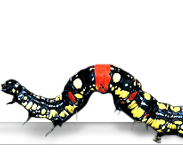Tracing the past
During his time as artist-in-residence at the Natural History Museum, Australian artist Daniel Boyd created a contemporary response to the 18th century First Fleet artwork collection.
His installation, displayed in the Images of Nature gallery throughout 2012, incorporates boxes previously used to house human remains, as well as their modern replacements. Boyd and Bergit Arends, Curator of Contemporary Art at the Museum, explain their significance in the video above.
The Museum cares for approximately 20,000 human remains from Britain and around the world, ranging from single teeth to complete skeletons. Boyd was interested to find out if there were any possible connections with his own ancestry.
On visiting the anthropology collections, he discovered that the human remains were being re-housed in specially-designed conservation grade boxes and decided to use the boxes to conceptually frame the work he created while on the residency.

Detail from the Images of Nature gallery installation by Daniel Boyd
Boyd’s artwork references the large number of portraits of Aboriginal people in the First Fleet collection. ‘By appropriating the imagery, and using new as well as dis-used boxes from the human remains collection, Daniel references the trauma that the Aboriginal communities experienced through the hands of the colonisers,’ says Arends.
In recent years, some communities have asked the Museum for the return of their ancestors’ remains and a programme is underway to respond to repatriation requests.
Margaret Clegg, Head of the Human Remains Unit at the Museum, explains, ‘While some communities sold ancestral remains to Europeans, in many cases there was no consent and they were just taken. We are trying to work with all of the communities who have made claims for return.’
This includes working with the communities to understand cultural issues and perspectives, and to exchange knowledge and skills.
Boyd adds, ‘I'm using the old and the new boxes to show that there is this process of change in the way that the Museum is dealing with the individuals.’
‘It's a way of showing that there's some kind of empathy to the individuals in the collection, and adding to this new dialogue that the Museum is having with the repatriation of remains.’
Since his residency at the Museum in 2011, Daniel has won the Bulgari Art Award, one of the most valuable art awards in Australia.
Find out more about the award on the Art Gallery of New South Wales website


